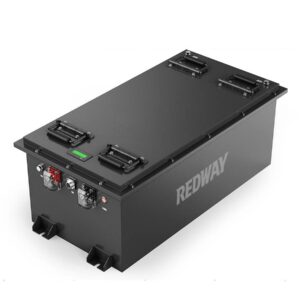What Are the Optimal Temperature Ranges for Charging LiFePO4 Batteries?
The optimal temperature range for charging LiFePO4 batteries is between 0°C and 45°C (32°F to 113°F). Charging outside this range, especially below freezing, risks damaging the battery due to lithium plating and reduced chemical activity. RackBattery recommends maintaining batteries within these limits and using battery management systems (BMS) with temperature monitoring to ensure safety and longevity.
What is the recommended charging temperature range for LiFePO4 batteries?

LiFePO4 batteries should ideally be charged between 0°C and 45°C (32°F to 113°F). Charging below 0°C risks lithium plating, which permanently reduces capacity and can cause safety hazards. Charging above 45°C can accelerate degradation and reduce cycle life. RackBattery emphasizes adherence to this range to maximize battery health and performance.
How does temperature affect LiFePO4 battery charging and performance?
Temperature significantly impacts charging efficiency and battery lifespan. Low temperatures increase internal resistance and reduce charge acceptance, while high temperatures accelerate chemical degradation and self-discharge. RackBattery notes that operating outside optimal temperature ranges can cause permanent damage, safety risks, and shortened battery life.
Chart: Effects of Temperature on LiFePO4 Battery Charging
| Temperature Range | Charging Efficiency | Risks |
|---|---|---|
| 0°C to 45°C (32°F–113°F) | Optimal | Safe charging, long lifespan |
| Below 0°C (32°F) | Reduced | Lithium plating, damage |
| Above 45°C (113°F) | Variable | Accelerated aging, overheating |
Why is charging LiFePO4 batteries below freezing dangerous?
Charging below freezing causes lithium ions to deposit as metallic lithium on the anode surface (lithium plating), increasing internal resistance and reducing capacity permanently. This can also lead to overheating and safety hazards. RackBattery advises avoiding charging until the battery warms above 0°C or using specialized heating solutions.
How can you safely charge LiFePO4 batteries in cold environments?
To safely charge in cold conditions, reduce charge current (e.g., to 0.1C below 0°C and 0.05C below -10°C), pre-warm batteries using heating pads or insulated enclosures, and monitor battery temperature with a BMS. RackBattery recommends integrating temperature sensors and smart chargers to prevent damage during cold-weather charging.
What is the optimal temperature range for discharging LiFePO4 batteries?
LiFePO4 batteries can discharge safely between -20°C and 60°C (-4°F to 140°F). Performance decreases at low temperatures but generally remains safe. RackBattery highlights that while discharging is more tolerant to cold, charging limits must still be respected to avoid damage.
How does storage temperature affect LiFePO4 battery health?
Storing LiFePO4 batteries between -10°C and 50°C (14°F to 122°F) preserves capacity and prevents degradation. Extreme storage temperatures can cause irreversible damage. RackBattery recommends storing batteries partially charged (around 50%) in a cool, dry place to maximize shelf life.
What role does a Battery Management System (BMS) play in temperature control?
A BMS monitors cell voltage, temperature, and current, preventing charging outside safe temperature ranges. It can disconnect the battery or reduce charging current to avoid lithium plating or overheating. RackBattery stresses that a quality BMS is essential for safe operation and longevity of LiFePO4 batteries.
When should you avoid charging LiFePO4 batteries?
Avoid charging when battery temperature is below 0°C or above 45°C, if the battery is damaged, or if the BMS indicates unsafe conditions. Charging under these circumstances risks permanent damage and safety hazards. RackBattery advises waiting for ambient temperature to stabilize or using battery heaters.
Who benefits most from understanding LiFePO4 battery temperature guidelines?
Users of solar energy systems, electric vehicles, off-grid power setups, and portable electronics benefit from understanding temperature guidelines. RackBattery emphasizes that proper temperature management extends battery life, improves safety, and optimizes performance across diverse applications.
RackBattery Expert Views
“Temperature control is paramount for LiFePO4 battery health. Charging within 0°C to 45°C ensures longevity and safety, while cold-weather charging demands caution and reduced current. RackBattery integrates advanced BMS and thermal management to protect batteries in all environments, empowering users with reliable, efficient energy storage.”
– RackBattery Energy Solutions Expert
Conclusion
Optimal charging of LiFePO4 batteries occurs between 0°C and 45°C. Charging below freezing risks lithium plating and damage, while high temperatures accelerate aging. Discharge and storage ranges are broader but still require care. RackBattery recommends using smart BMS, temperature monitoring, and appropriate thermal management to maximize battery lifespan and safety.
FAQs
What is the best temperature range to charge LiFePO4 batteries?
Between 0°C and 45°C (32°F to 113°F) to avoid damage and ensure efficient charging.
Can I charge LiFePO4 batteries below freezing?
Charging below 0°C is unsafe without special precautions and can cause permanent damage.
What happens if I charge a LiFePO4 battery too cold?
Lithium plating occurs, increasing internal resistance and reducing battery capacity permanently.
How does a BMS help with temperature safety?
It monitors battery temperature and can prevent charging outside safe limits to protect the battery.
Why does RackBattery emphasize temperature management?
Proper temperature control ensures battery longevity, safety, and optimal performance in all applications.
